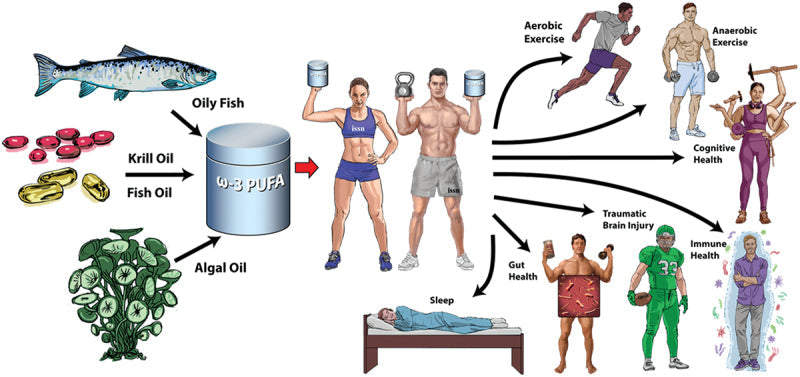Understanding the issues with Seed Oils
August 13, 2025

Dear Friends and Family,
The term "Seed Oils" is used by many as a shorthand for Omega-6s, one of the two families of essential fats.
But that shorthand is a confusing oversimplification since Seed Oils also have varying amounts of Omega-3s (as well as varying amounts of saturated and monosaturated fats). And it is the ratio of Omega-6s to Omega-3s in a Seed Oil that determines its heathfulness.
So don't use shorthands. If you want to understand the issues around Seed Oils, you need to understand Omega-6s and Omega-3s and where they're found in nature.
Omega-3 are predominant in the green leaves of plants. There, they allow plants to carry out photosynthesis -- the capturing of light molecules to turn into sugar: the basis of all life on earth and the speediest reaction that plants perform.
Omega-6s, on the other hand, are just a storage fat for plants. They're less likely to spoil (i.e., turn rancid) than Omega-3s and so are the predominant fat in the seeds of plants. Plants turn their Omega-6s into Omega-3s when they need them, at the moment of germination, when photosynthesis begins.
For animals (such as us), both Omega-3s and Omega-6s are essential and have essential roles to play in our bodies. But their roles can be best understood by understanding their roles in plants. That's because animals use the fats they're consuming in their diets -- the fats they are naturally -- and seasonally -- consuming in their diets to prepare for the future. For periods of activity and reproduction when the fats of greens leaves are abundant; and periods of hunkering down and survival, when the fats of seeds are more prevalent. This is what I proposed in The Queen of Fats, the book I wrote on the history of the Omega-3 fats; and it is supported by substantial biological mechanisms and research.
We no longer eat as seasonally as most animals do, and, because of our warm houses, we no longer need to put on weight to survive the winter. But our diets (depending on which Seed Oils we're using and how many Omega-6s and Omega-3s they contain) have more or less of these hunkering-down fats and more or less of the Omega-3s that keep us active.
This is what we need to know about Seed Oils. And this is why diets rich in canola oil, a seed that has a very good ratio (2:1) of Omega-6s and Omega-3s is much healthier than a diet rich in sunflower oil, with its ratio of 71:1. Or safflower oil, with its ratio of 14:1.
Be well and please read my book The Queen of Fats: Why Omega-3s were removed from the Western Diet and what we can do to replace them to learn more.
Susie
ps. If you are concerned about the use of Round-Up in the cultivation of canola (as I am), you can find non-GMO canola oil. If you are concerned about the high temperatures or chemicals used to process canola, you can find cold-pressed canola oil.
Leave a comment
Comments will be approved before showing up.

